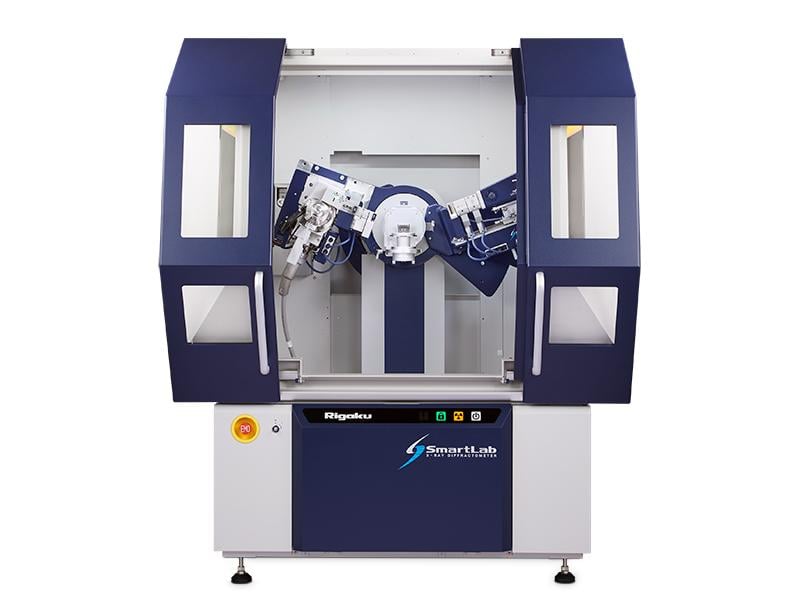ORIENTATION ANALYSIS OF AN ORGANIC THIN FILM ON A RUBBED GLASS SUBSTRATE BY IN-PLANE XRD
Introduction
Organic semiconductors are the most promising materials amongst next-generation semiconductors due to their low production cost and outstanding characteristics that outperform conventional inorganic materials. The orientation and arrangement of the molecules are crucial to the properties of organic semiconductors. This example demonstrates the advantage of the in-plane X-ray diffraction (XRD) method for evaluating the orientation condition of a copper phthalocyanine (CuPc) thin film, a photoconductive and electroluminescent organic material.
Measurements and Results
Fig. 1 and Fig. 2 show the out-of-plane and in-plane XRD profiles of a CuPc thin film, respectively In Fig. 1, only the CuPc h00 diffraction peaks are observed, indicating that the CuPc film has its a-axis normal to the sample surface. In contrast, in Fig. 2, diffraction peaks with different indices are observed in the direction parallel and perpendicular to the rubbing direction. This indicates that the CuPc film has an in-plane anisotropic orientation as; b-axis // rubbing direction; c-axis ⊥rubbing direction. Fig. 3 shows the schematic of the crystal orientation of the CuPc film with respect to the rubbing direction of the substrate.



Sample provided: Takezoe and Ishikawa Laboratory, Tokyo Institute of Technology.
References: (1) M. Ofuji et.al.: Jpn. J. Appl. Phys., 42 (2003) 7520-7524.
Recommended equipment
► Automated multi-purpose X-ray diffractometer SmartLab (equipped with an in-plane arm and φ axis) + RxRy attachment



